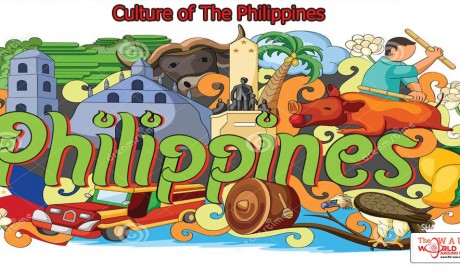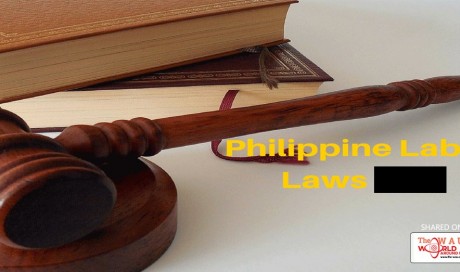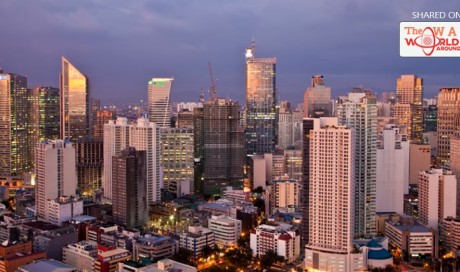History and Ethnic Relations
Emergence of the Nation. Early inhabitants are believed to have reached the area over land bridges connecting the islands to Malaysia and China. The first people were the Negritos, who arrived twenty-five thousand years ago. Later immigrants came from Indonesia. After the land bridges disappeared, immigrants from Indo-China brought copper and bronze and built the rice terraces at Benaue in northern Luzon. The next wave came from Malaysia and is credited with developing agriculture and introducing carabao (water buffalo) as draft animals. Trade with China began in the first century C.E. Filipino ores and wood were traded for finished products.
In 1380, the "Propagation of Islam" began in the Sulu Islands and Mindanao, where Islam remains the major religion. The Muslim influence had spread as far north as Luzon when Ferdinand Magellan arrived in 1521 to claim the archipelago for Spain. Magellan was killed soon afterward when a local chief, Lapu-Lapu, refused to accept Spanish rule and Christianity. Miguel Lopez de Legazpi landed in the Philippines in 1564 and consolidated Spanish power, designating Manila as the capital in 1572. Roman Catholic religious orders began Christianizing the populace, but the Sulu Islands and Mindanao remained Muslim. The Spanish governed those areas through a treaty with the sultan of Mindanao. The Spanish did not attempt to conquer the deep mountain regions of far northern Luzon.
The occupation by Spain and the unifying factor of Catholicism were the first steps in creating a national identity. Filipinos became interested in attaining independence in the middle of the nineteenth century. In the 1890's, the novels of José Rizal, his exile to a remote island, and his execution by the Spaniards created a national martyr and a rallying point for groups seeking independence. Armed attacks and propaganda increased, with an initial success that waned as Spanish reinforcements arrived. The Spanish-American War of 1898 and the defeat of the Spanish fleet in Manila Bay led the Filipino leader Emilio Aguinaldo to declare independence from Spain. The United States paid twenty million dollars to the Spanish for the Philippines under the Treaty of Paris. Aguinaldo did not accept United States occupation and fought until the Filipino forces were defeated. In 1902, the Philippines became an American territory, with the future president William Howard Taft serving as the first territorial governor. Over the next two decades, American attitudes toward the Philippines changed and the islands were given commonwealth status in 1933. Independence was promised after twelve years, with the United States retaining rights to military bases.
The Japanese invaded the Philippines early in 1942 and ruled until 1944. Filipino forces continued to wage guerrilla warfare. The return of U.S. forces ended the Japanese occupation. After the war, plans for independence were resumed. The Republic of the Philippines became an independent nation on 4 July 1946.
The new nation had to recover economically from the destruction caused by World War II. Peasant groups wanted the huge land holdings encouraged by the Spanish and Americans broken apart. In 1955, Congress passed the first law to distribute land to farmers.
Ferdinand Marcos governed from 1965 to 1986, which was the longest period for one president. From 1972 to 1981, he ruled by martial law. Marcos was reelected in 1982, but a strong opposition movement emerged. When the leader of the opposition, Benigno Aquino, was murdered after his return from exile in the United States, his wife, Corazon Aquino, entered the presidential race in 1986. Marcos claimed victory but was accused of fraud. That accusation and the withdrawal of United States support for Marcos led to "People Power," a movement in which the residents of Manila protested the Marcos regime. The Filipino military supported Aquino, who was declared president, and the Marcos family went into exile in Hawaii.
The Aquino years saw the passage of a new constitution with term limits and the withdrawal of U.S. military forces in 1991, when the government did not grant a new lease for United States use of military bases.
Fidel Ramos, the first Protestant president, served from 1991 to 1998. Major problems included a fall in the value of the peso and the demands of Muslim groups in Mindanao for self-determination and/or independence. The government offered self-governance and additional funds, and the movement quieted.
Joseph "Erap" Estrada was elected for one six-year term in 1999. The demands of the Muslim rebels escalated, culminating with the kidnaping of twenty-nine people by the Abu Sayyaf group in April 2000. Late in the year 2000, impeachment proceedings were brought against Estrada, who was charged with financial corruption.
National Identity. Filipinos had little sense of national identity until the revolutionary period of the nineteenth century. The word "Filipino" did not refer to native people until the mid-nineteenth century. Before that period, the treatment of the islands as a single governmental unit by Spain and the conversion of the population to Catholicism were the unifying factors. As a desire for independence grew, a national flag was created, national heroes emerged, and a national anthem was written. A national language was designated in 1936. National costumes were established. The sense of a national identity is fragile, with true allegiance given to a kin group, a province, or a municipality.
Ethnic Relations. Ninety-five percent of the population is of Malay ancestry. The other identifiable group is of Chinese ancestry. Sino-Filipinos are envied for their success in business. They have maintained their own schools, which stress Chinese traditions.
Seventy to eighty language groups separate people along tribal lines. Approximately two million residents are designated as cultural minority groups protected by the government. The majority of those sixty ethnic groups live in the mountains of northern Luzon. People whose skin is darker are considered less capable, intelligent, and beautiful. Descendants of the Negritos tribe are regarded as inferior.
...[ Continue to next page ]
Share This Post












